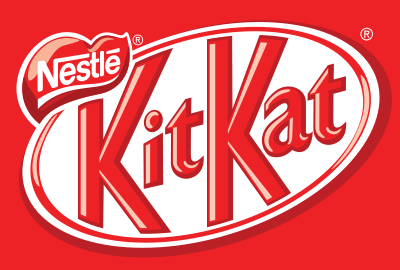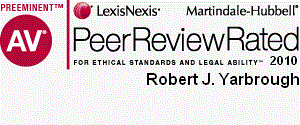Newsletter Issue 83 - January 2016
In this issue:
'Super Bowl®' as a registered trademark
Trademark in the appearance of a candy bar
Attorney's fees in patent litigation
Ask Dr. Copyright...
Dear Doc:Everywhere I look today, I see advertisements about what to eat during "THE BIG GAME". What's up with that?
Signed,
Super Confused
Dear Sportsfan:
According to the National Football League, "Super Bowl®" is their registered trademark for television broadcasting services; television transmission services; distribution of television programming to cable and satellite television systems; distribution of television programs for others; cable television broadcasting; radio broadcasting; broadcasting programming on the Internet; information transmission via electronic communications networks; transmission of information through video communication systems; broadcasting services and provision of telecommunication access to video and audio content provided via a video on demand; streaming of audio material on the Internet; streaming of video material and podcasts on the Internet; electronic delivery of images and photos via a global computer network; providing multiple-user access to a global computer information network for the purpose of participating in interactive polling in the field of football; wireless communications services, namely transmission of text, graphics, data and entertainment information to mobile phones; mobile media and entertainment services in the nature of electronic transmission of entertainment media content.
The League has also registered the term for football helmets, cell phone covers, cell phone straps, special holsters and accessories in connection thereof for carrying cellular telephones, cell phone face plates, decorative magnets, prerecorded compact discs, audio tapes, videotapes and DVDs all featuring the sport of football, computer mouse pads, jewelry, watches, clocks, pins, earrings, necklaces, bracelets, belt buckles made primarily of precious metals, charms, money clips made primarily of precious metals, tie pins, rings, collectible coins, commemorative coins, posters, trading cards, series of books relating to football, magazines relating to football, newsletters relating to football, notepads, stickers, bumper stickers, paper pennants and greeting cards; printed tickets to sports games and events; pens and pencils, rub on decorative transfers, note paper, pictorial prints, picture postcards, art pictures, wrapping paper, paper table cloths, paper napkins, paper party invitations, paper gift cards; paper gift bags, paper decorations, collectible cards; collectible card and memorabilia holders, souvenir programs for sports events, toys and sporting goods, namely, plush toys, stuffed animals, play figures, golf balls, golf club covers, footballs, toy banks, playing cards, Christmas tree ornaments, balloons, jigsaw puzzles, and miniature helmets.
If anyone wants to use any logo or trademark of the League, she must apply to NFL Properties LLC for a license by submitting a 36 page application, and agree to pay guaranteed royalties that start at $100,000 per year and go up (way up) from there. If she does not want to pay NFL Properties, and does not want to get sued for trademark infringement, the only choice is to choose a euphemism like "Big Game", which is OK, unless you're a dentist from Indiana (just sayin').
Now, if you watch the Game-O Gigantico, you will also hear: "This telecast is copyrighted by the NFL for the private use of our audience. Any other use of this telecast or any pictures, descriptions, or accounts of the game without the NFL's consent is prohibited." So be sure not to tell anyone the score if you are asked.
Now, where are my nachos? It's time to watch the COLOSSAL CONCUSSION CONTEST.
The "Doc"
Trademark Disputes Can Be So Sweeeet!
In late 2013 we wrote about a trademark dispute between the
Hershey Company and Mars Inc. over whether Mars had trademark rights
in the cross-section of its Snickers candy bar. Hershey opposed the
mark on grounds that it was merely descriptive, de jure functional,
generic, and failed to function as a trademark.
The cross-section of Snickers, according to Hershey, was no more
distinctive than the cross-section of other candy bars such as Oh
Henry!, Baby Ruth, and Peanut Chews. We wrote that that this was "a
great example of the interaction between aggressive branding,
trademark law, and competitive forces." So, what happened to this
sweet trademark dispute? Nothing! Since the case was filed, the
Appeal Board's docket shows a series of routinely granted motions
for an extension.
Recent events in the UK suggests that Hershey may have the upper
hand in its dispute with Mars. In 2010, Nestlé attempted to register
the shape of its KitKat candy bar in the UK. Cadbury chocolates
opposed the registration on grounds that the shape of the candy bar
was insufficiently distinctive to warrant a trademark registration.
The European Court of Justice concluded that Nestlé's trademark
application did not comply with European law. In a 2014 written
opinion, the judge said that Nestlé had not used the candy bar's
shape in promoting it and, in fact, packaged it in opaque wrapping
that hid the allegedly distinctive shape. So, this means that
consumers identified the source of the chocolate bar not by its
shape but by the written trademark written on the candy's wrapper.
The judge wrote that consumers may associate the shape with KitKat
candy "but no more than that." This is not to say that shape cannot
distinguish a candy product. According to the Guardian, which
reported the story, the shapes of the Toblerone candy bar and
Nestlé's Walnut Whip are both registered trademarks.
Under European trademark law (and under U.S. law), trademarks are
deemed to be indicators of the source of goods and services. If
consumers do not rely upon the product's shape to identify the
product's source (i.e., who made it) then it would appear that the
shape is not a trademark. Nestlé disagrees and it intends to appeal
the European Court's decision. The Guardian quoted a European
trademark attorney:
This seems to be a commonsense decision and perhaps public policy
also played a part. Allowing registration of the KitKat shape would
have given Nestlé invaluable monopoly and competitive advantage over
other confectionery manufacturers, which is one of the reasons why
Cadbury has been keen to stop them.
If we were to apply this reasoning to the Hershey - Mars dispute
reported by us in 2013, Mars could not maintain trademark rights
over the cross-section of its Snickers candy bar because the
cross-section is invisible to the consumer before he buys and bites
into it. Let's see what happens.
Want to Collect Attorney's Fees? Explain Why You Don't Infringe!

Most parties to litigation have to pay their own attorneys' fees.
The patent statute includes an exception - in 'exceptional'
circumstances, the successful party in patent infringement
litigation can collect attorneys' fees from the losing party.
Not every losing litigant is liable for the other party's fees. The
reasonableness of the party's litigation position and the
unreasonableness of the party's conduct are factors considered by
the trial court. Plaintiffs who perform no investigation, have no
facts to back up their allegations, or who make unreasonable
interpretations of their patent claims have been tagged for fees.
The case of
Lumen View Tech. v Fingthebest.com, Inc, is illustrative. Lumen
View was a non-practicing entity that was created to acquire a
particular patent and after acquisition immediately initiated
multiple lawsuits for infringement. The trial judge said:
No reasonable litigant could have expected success on the merits.
... [T]he most basic pre-suit investigation would have revealed this
fact. Not only that, FTB's attorneys informed Lumen of the
baselessness of the suit from the onset of litigation and repeatedly
sought clarification as to the nature of the alleged infringement.
The trial judge clearly was offended by Lumen's conduct:
...Lumen was motivated... by its plan to extract a nuisance
settlement from FTB on the theory that FTB would rather pay an
unjustified license fee than bear the costs of the threatened
expensive litigation. ...The nature of Lumen's complaint, the
absence of any reasonable pre-suit investigation, and the number of
similar lawsuits filed within a short time frame all indicate that
Lumen's instigation of baseless litigation is not isolated to this
instance, but is instead part of a predatory strategy aimed at
reaping financial advantage from the inability or unwillingness of
defendants to engage in litigation against even frivolous patent
lawsuits.
The judge found the matter 'exceptional' and awarded attorneys' fees
of $149,000 to Findthebest; however, the judge was not done. She
doubled the award to almost $300,000.00 to deter further frivolous
litigation. On
appeal, the Court of Appeals for the Federal Circuit affirmed
the trial court's finding of an 'exceptional' case warranting
attorneys' fees, but reversed the doubling of the damages because
enhanced fee awards are not authorized by the statute.
The bottom line: if you're a patent infringement plaintiff,
investigate your case before you file and be prepared to show that
the defendant infringes. If you're an infringement defendant that
does not infringe, explain that fact to the patent owner early and
often.

